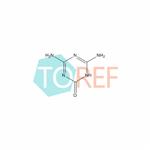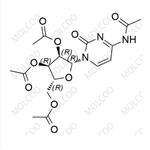Mechanism of action
Azacitidine, a chemical analogue of cytidine, is incorporated into DNA and RNA and produces cytotoxic effects on haematopoietic cells in the bone marrow at high doses. Azacitidine is incorporated into RNA in greater amounts than DNA, and the incorporation of azacitidine into RNA results in the breakdown of polysomes, accumulation of 80S ribosomes, decreased activity of transfer RNA receptors, and inhibition of protein synthesis. At low doses, azacitidine inhibits DNA methyltransferase by forming a covalent bond between DNA-cytosine methyltransferase and 5-azacytosine-containing DNA, resulting in DNA hypomethylation.
Side effects
Azacitidine is usually given by injection and its side effects include: diarrhoea, loss of appetite, dizziness, bone pain, bruising, chest pain, headache, bleeding gums, skin lumps, dry skin, chills, cough, measles, loss of appetite, pain in the bladder, bleeding after having a bowel movement, constipation, fast heartbeat or feeling unwell, fever, fatigue, cloudy urine, difficulty breathing and swallowing. It varies from person to person and not all of the above symptoms may occur.






